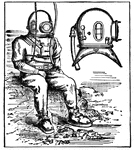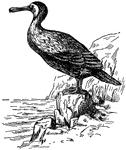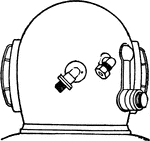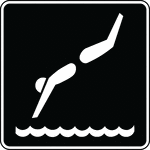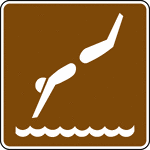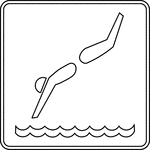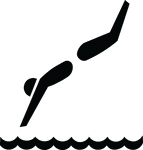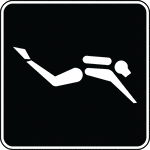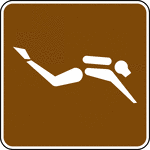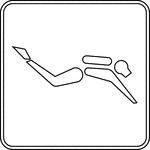
Loon
The loon is a diving bird that finds its food under the water. It will dip its bill into the water and…

Grebe
Diving birds, such as the grebe, have webbed (or lobed) feet and are expert in swimming and diving.

Loon
The loon is a diving bird. Its peculiar cry, sometimes resembling a hysterical laugh, has given rise…

Great Diving Beetle Adult and Larvae
"The Dyticus marginalis, a European species very common in ponds, attains a length of more…

Great Diving Beetle Female
"The Dyticus marginalis, a European species very common in ponds, attains a length of more…
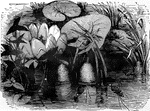
Spider, diving
"Another remarkable member of the Araneidae is the Diving Spider, Argyroneta aquatica, which…

Diving Dress
"Diving Apparatuses are contrivances by means of which divers are enabled to remain a considerable time…
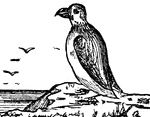
Puffin
A marine diving bird, allied to the auk, and having a short, thick beak like that of the parrot.

Great Diving Beetle
Dytiscus Harminieri, a genus of predatory, diving beetles that usually live in wetlands and ponds.

Great Diving Beetle
Dytiscus Harminieri, a genus of predatory, diving beetles that usually live in wetlands and ponds.

Diving Dress
"The diving dress envelops the whole body of the diver, the upper portion a being the "helmet," the…
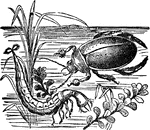
Great Diving Beetle
"A, Dytiscus Marginalis, or great Water-beetle; B, larva." — Chambers' Encyclopedia, 1875
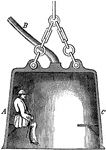
Diving Bell
"The large iron vessel does not allow air to escape once it is lowered into a body of water for underwater…
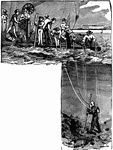
Early Scuba diving
"The first sensation in descending under water in a suit of armor is the sudden, bursting roar in the…
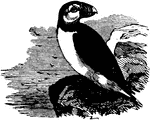
Common Puffin
"The name for the marine diving birds of the genus Fratercula. The common puffin is a native of the…

Striped Muscle Fibers of a Frog
Two striped muscle fibers of the hyoglossus of frog. Labels: a, Nerve end plate; b, nerve fibers leaving…

Diving-dress and diving-helmet
The diving dress in a rubber suit with a metal helmet, having pieces of glass in front to enable to…
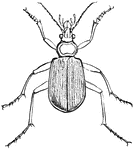
Predaceous Beetle
Predaceous diving beetles is a family of water beetles. They are about 25 mm (one inch) long on average,…

Predaceous Beetle
Predaceous diving beetles is a family of water beetles. They are about 25 mm (one inch) long on average,…
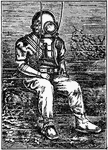
Standard Diving Dress
A standard diving dress consists of a metallic (copper, brass or bronze) diving helmet, an airline or…
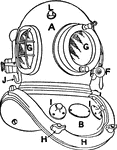
Diving Helmet (Front)
A front view of a diving helmet. A, Helmet; B, Breastplate; F, Emergency cock; G, Glasses in frame;…
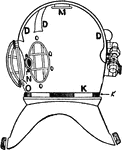
Diving Helmet (Side)
A side view of a diving helmet. K, Segmental neck rings; D, Air conduits; Telephone receiver; N, transmitter;…
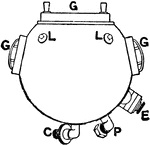
Diving Helmet (Top)
Top view of diving helmet. C, Air inlet valve; E, Regulating outlet valve; G, Glasses in frames; L,…
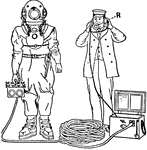
Diver's Communication
An illustration of communication between a diver and the surface. Q, Battery with switch and bell in…

Submarine Electric Lamp
An illustration of a submarine electric lamp without reflector. A, Metal case containing electrical…
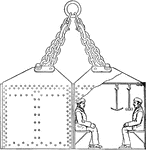
Diving Bell
A diving bell, also known as a wet bell, is a cable-suspended airtight chamber, open at the bottom like…
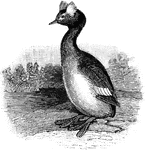
Horned Grebe
The Horned Grebe (Podiceps cornutus) is a freshwater diving bird in the Podicipedidae family of grebes.

Barge with Diving Bell
"Sectional view of diving bell and barge, employed on the River Clyde. All the appliances are worked…
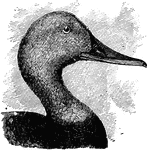
Canvas-back Head
"Fuligula vallisneria. Canvas-back. Adult male: The head close-feathered. Bill high at the base and…
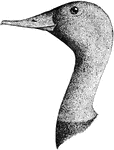
Large Canvas-backs Head
"Fuligula vallisneria. Canvas-back. Adult male: The head close-feathered. Bill high at the base and…
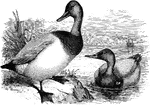
Canvas-backs
"Fuligula vallisneria. Canvas-back. Adult male: The head close-feathered. Bill high at the base and…
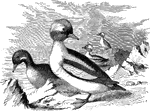
Buffleheads
"Clangula albeola. Buffle-head. Butter-ball. spirit-duck. Dipper. Bill with nostrils rather behind than…

Black Scoter
"Oidemia americana. American Black Scoter. Sea Coot. Adult male: Plumage entirely black, less glossy…

Surf Duck
"Oidemia perspicillata. Surf Duck. Sea Coot. Adult male: Bill as above, singularly variegated in color,…

Trowbridge's Surf Duck
"Oidemia perspicillata trowbridgii. Trowbridge's Surf Duck, With the bill longer, exceeding the head,…
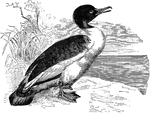
Merganser
"Mergus merganser. Merganser. Goosander. Nostrils near middle of bill. Frontal feathers extending acutely…

Red-breasted Merganser
"Mergus serrator. Red-breasted Merganser. Nostrils near base of bill. Frontal feathers extending obtusely…

Double-crested Cormorant
"Phalacrocorax dilophus. Double-crested Cormorant. Tail of 12 feathers. Gular sac convex behind. No…

White-headed Gull Head
"Larus heermanni. White-headed Gull. Bill shorter than head or tarsus, rather slender, moderately compressed,…

Roseate Tern
"Sterna dougalli. Roseate Tern. Paradise Tern. Bill about as long as head or foot, straight, slender,…
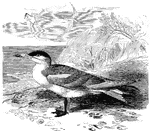
Caspian Tern
"Sterna (T.) caspia. Caspian Tern. Imperial Tern. Bill dark vermilion red, growing and somewhat "diaphanous"…
